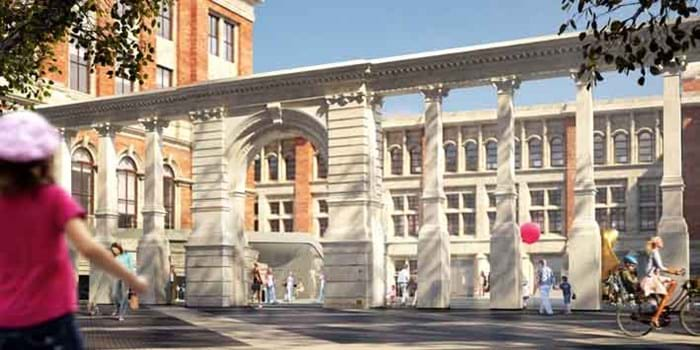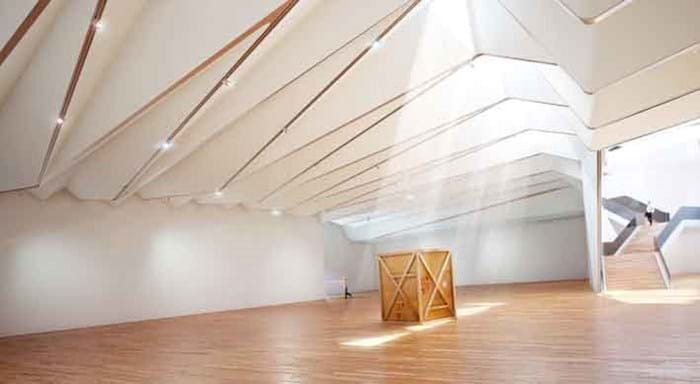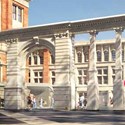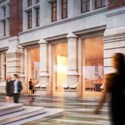There are more visitors than ever before and the project is intended to sustain this increasing audience.
Now approved by the Royal Borough of Kensington and Chelsea, the scheme will transform a previously inaccessible back-of-house space into an open courtyard for installations, events and a café to create a new link between the heart of the V&A and Exhibition Road.
From the new entrance lobby, the gallery area will be accessed by a staircase with prominent views of the museum's historic façades. The large, uninterrupted space will allow the V&A to significantly improve the way it presents its exhibition programme. The project will also reveal the Victorian façades on the west side of the complex which have never been on public view but are now restored to their former glory.
Levete, architects of the Selfridges department store in Birmingham and the media centre at Lord's Cricket Ground, won the international competition to design the project in March 2011. The main building work should run from 2013-2015, with a public opening in 2016. Some £25m has now been pledged out of a total project budget of £41m.
It allows the V&A to achieve the long-term aims of the second phase of FuturePlan, creating contemporary new settings for its outstanding collections while restoring much of the building to its original Victorian splendour.
Furniture Gallery
Meanwhile, as part of phase one of FuturePlan, the museum has announced it will open a new furniture gallery this December, providing a permanent home for an internationally renowned collection.
The V&A has always displayed furniture across its galleries, but this will be the first dedicated solely to furniture and, they say, the only gallery worldwide devoted to a comprehensive display of furniture, telling the story of its production across six centuries. Some of the objects, more than 200 pieces of British and European furniture, from the Middle Ages to the present day, as well as pieces from the Americas and Asia, have not been on display for 30 years.
The gallery will tell the story of how furniture was made and decorated over 600 years, exploring a thematic range of materials and techniques ranging from joinery, moulding, upholstery and digital manufacture, to carving, marquetry, gilding and lacquer. It will focus on techniques of construction and decoration and will include examples of how conservation and analysis have revealed previously unknown information about the way in which the objects were made and about the people who made them.
On display will be a 15th century medieval desk cupboard which reveals how English furniture-makers of the time used oak sourced from 1500 miles away, and a bureau (1780-1820) from Mexico, veneered with mother-of-pearl which would have required craftsmen to saw shells for 5000 hours.
For the first time at the V&A, digital labels will be used with touch screens to provide additional content and context for each object.
The furniture gallery is fully funded with a lead gift from an anonymous donor.










